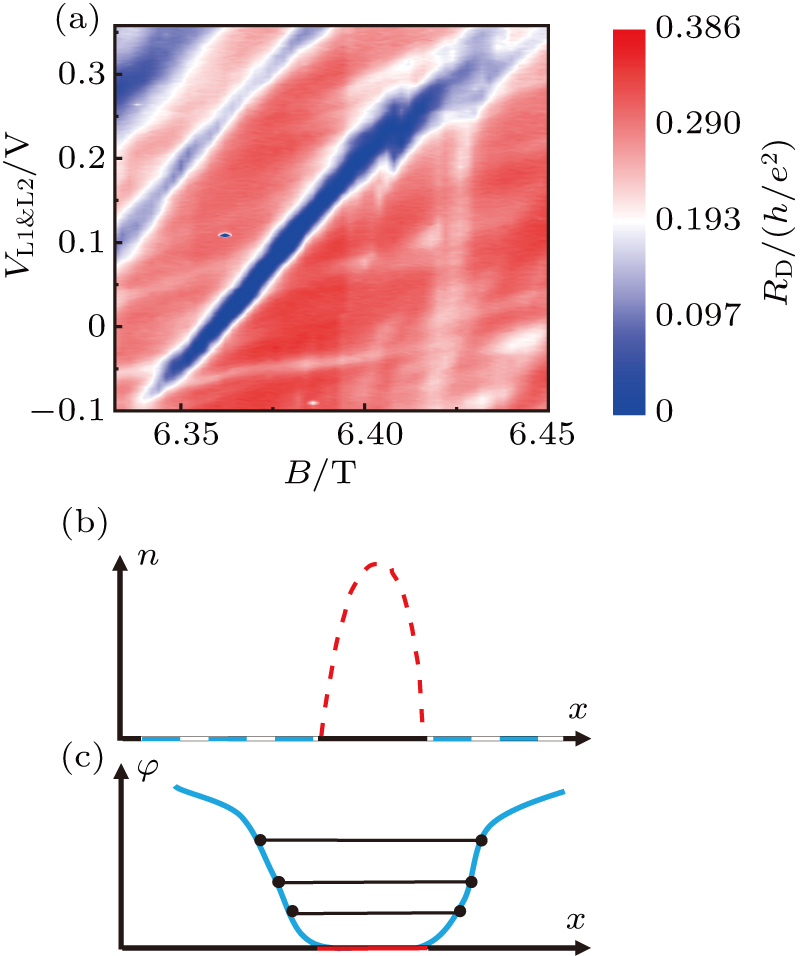Coulomb-dominated oscillations in a graphene quantum Hall Fabry–Pérot interferometer
Project supported by the National Key Research and Development Program of China (Grant Nos. 2016YFA0300601 and 2017YFA0303304), the National Natural Science Foundation of China (Grant Nos. 11874071, 11774005, and 11974026), and Beijing Academy of Quantum Information Sciences, China (Grant No. Y18G22).
RD as a function of B and VL1&L2 with back gate voltage VBG = 17.4 V near ν = 2. VL1&L2 is the gate voltage applied on side gates L1 and L2 which are jointed together. Note that here the carrier type is electron. The positive slope of the constant phase lines indicates that the interference is Coulomb-dominated. Magnetic period ΔB ≈ 45 mT corresponds to an area A ≈ 0.046 μm2. It gives a mean interfering area with radius ∼ 120 nm, which is smaller than the lithographic geometry. (b) Schematic profile of spatial carrier density distribution when starting to fill an empty Landau level. Red dashed lines represent carrier density in compressible region while blue dashed lines represent incompressible region. (c) The corresponding screened disorder potential of (b). Red solid line denotes the compressible region where the disorder potential is screened while blue solid lines denote incompressible region where the potential is unscreened. Thus, the compressible region acts as a Coulomb island, the size and position of which are determined by the details of the disorder potential. For clarity, only one non-degenerate Landau level is considered.
